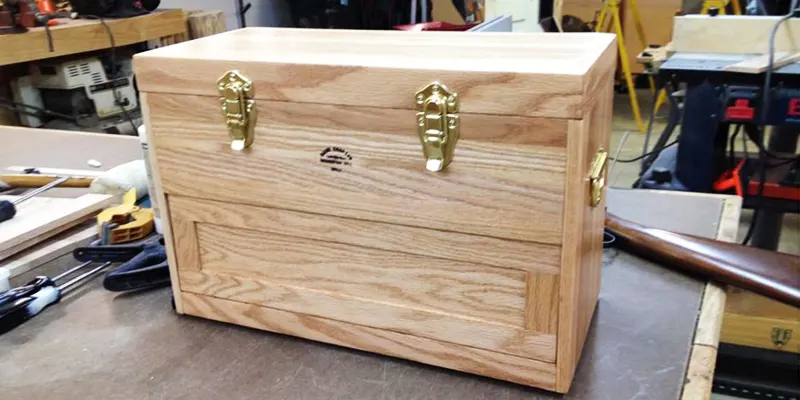How to install an in-wall gun cabinet with a secure locking system

Owning firearms comes with a significant responsibility to ensure their safe and secure storage. While traditional gun safes offer robust protection, an in-wall gun cabinet provides discreet concealment, blending seamlessly into your home's aesthetic. This comprehensive guide delves into the meticulous process of installing an in-wall gun cabinet with a secure locking system, emphasizing safety, functionality, and long-lasting performance.
1. Choosing the Right Cabinet and Location:
Cabinet Size and Capacity: Determine the size and capacity of the cabinet based on your firearm collection. Consider future needs to ensure sufficient space.
Locking Mechanism: Opt for a robust locking system that surpasses industry standards. Electronic locking systems with biometric authentication, time-delay safes, and multi-point locking mechanisms offer superior security.
Material: Steel construction with reinforced walls provides superior strength against forced entry. Fire-rated cabinets offer additional protection against heat and flames.
Installation Location: Select a discreet yet accessible location. Consider factors like wall construction, proximity to electrical outlets, and potential obstructions.
2. Planning and Preparation:
Wall Inspection: Carefully examine the wall where the cabinet will be installed. Verify the type of material (drywall, concrete, brick) and its structural integrity.
Electrical and Plumbing Considerations: Ensure the location is free from electrical wiring and plumbing lines. Consult with an electrician or plumber if necessary.
Building Codes and Permits: Familiarize yourself with local building codes and regulations pertaining to gun storage. Some localities might require permits for installation.
Tools and Materials: Gather the necessary tools including a stud finder, level, drill, hammer, screwdriver, jigsaw, tape measure, safety goggles, dust mask, and appropriate fasteners for the wall material.
3. Installation Process:
Marking and Measuring: Using the cabinet's dimensions and a level, carefully mark the installation area on the wall. Account for any necessary clearance for the locking mechanism and door hinges.
Wall Framing: For drywall walls, install wall studs behind the cabinet to reinforce the structure. For concrete or brick walls, use anchors or other specialized fastening systems.
Cutting and Shaping: Precisely cut the drywall or other wall material using a jigsaw, ensuring a snug fit for the cabinet. Wear appropriate safety gear during this step.
Cabinet Positioning: Carefully position the cabinet within the cut-out area, ensuring it is level and plumb. Use temporary supports for stability during initial placement.
Securing the Cabinet: Secure the cabinet to the wall using the appropriate fasteners. For drywall, use drywall screws and heavy-duty anchors. For concrete or brick walls, use specialized anchors or concrete screws.
Door Installation: Install the door hinges and ensure smooth operation. Secure the locking mechanism to the cabinet frame.
Testing and Refinement: Once the cabinet is secured, test the locking mechanism thoroughly. Adjust hinges and latching mechanisms as needed for optimal performance.
4. Secure Locking System Considerations:
Electronic Locks: Electronic locking systems provide advanced security features like biometric authentication, programmable access codes, and alarm systems. Choose a system with tamper-resistant technology and battery backup for reliable operation.
Keyed Locks: Ensure the key is unique, durable, and provides a high level of resistance against picking and manipulation. Consider a double-bitted or high-security lock for added protection.
Mechanical Locking Mechanisms: Choose locking mechanisms with robust construction, multiple locking points, and tamper-resistant features. Consider a deadbolt system for increased security.
Alarm Systems: Integrate a motion sensor alarm or a tamper-proof alarm system to alert you in case of unauthorized access.
5. Safety and Security Measures:
Gun Safety Practices: Familiarize yourself with safe firearm handling practices and ensure all firearms are unloaded and properly stored within the cabinet.
Access Control: Limit access to the cabinet and store the keys or access codes securely. Consider using a separate lockbox or safe for storing keys or biometric information.
Regular Maintenance: Periodically inspect the locking mechanism and door hinges for wear and tear. Lubricate moving parts as needed to ensure smooth operation.
Environmental Considerations: Protect the cabinet from extreme temperatures, humidity, and other environmental factors that could compromise its performance.
6. Additional Tips and Considerations:
Professional Installation: For complex installations or if you lack the necessary expertise, consider hiring a professional contractor.
Fire Safety: Ensure the cabinet's placement complies with local fire codes and regulations. Consider using fire-resistant materials or installing a fire-rated cabinet for additional protection.
Concealment and Camouflage: Blend the cabinet into your home's decor by using paint or wallpaper to match the surrounding walls.
Insurance: Inform your insurance provider about the installation of the in-wall gun cabinet to ensure adequate coverage in case of loss or theft.
Conclusion:
Installing an in-wall gun cabinet with a secure locking system demands careful planning, meticulous execution, and adherence to best practices. By following this guide and prioritizing safety and security measures, you can create a discreet and effective storage solution for your firearms, ensuring their protection and minimizing the risk of unauthorized access. Remember, responsible firearm ownership includes taking every precaution to prevent accidents, theft, and misuse.


0 comments :
Post a Comment
Note: Only a member of this blog may post a comment.